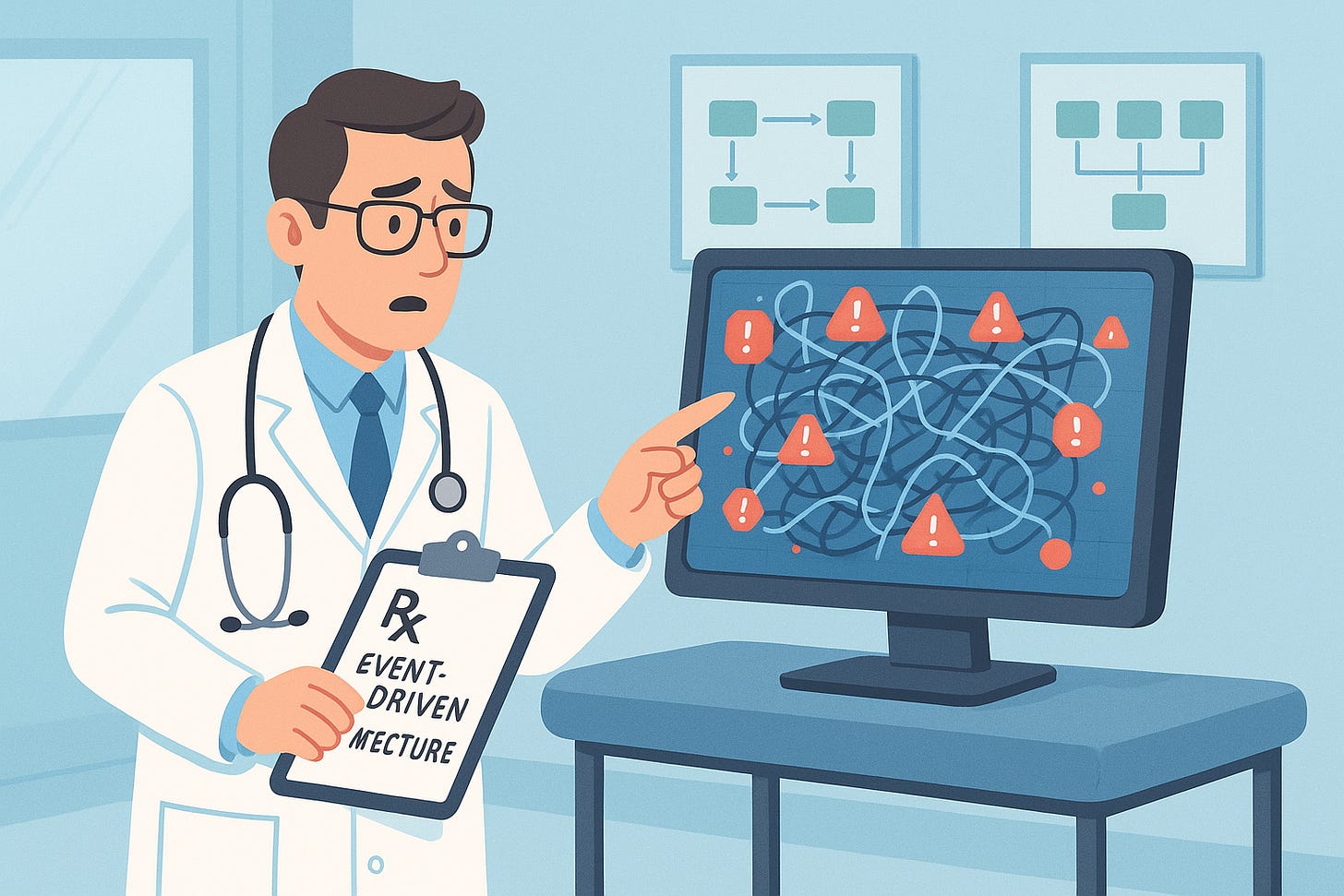The Patient Who Thought He Had Microservices (Spoiler: He Didn't)
When your 'microservices' need couples therapy
Last Friday, a case arrived at my practice that reminded me why I specialized in systems architecture.
“Doctor,” said the Tech Lead, clearly exhausted, “our system is sick. We started with microservices two years ago, everything seemed perfect on paper, but now... every deploy is a nightmare and our users are constantly complaining.”
I asked him to describe the symptoms.
“Well, to start with, we can no longer do independent deployments. When we update the user service, something inevitably breaks in shopping carts or payments. The other day we changed a field in an API and had to update six different services.”
First red flag. Microservices that can’t be deployed independently are not microservices.
He continued: “And the outages... Doctor, it’s horrible. Last week our inventory service went down for five minutes and EVERYTHING stopped working. Users couldn’t even log in because, apparently, login needs to validate something with inventory.”
Second red flag. Domino effect. A classic symptom.
“But the worst part,” he continued with a bitter smile, “is debugging. Yesterday a user reported they couldn’t complete a purchase. To trace the error I had to review logs from eight different services, correlate IDs throughout the system, and finally discover that the problem was a timeout in a service I didn’t even know was involved in the checkout process.”
Bingo. Distributed Monolith in full swing.
My diagnosis was immediate: Distributed Monolith Syndrome
“Look,” I explained, “you don’t have microservices. You have a monolith that someone cut into pieces and distributed across the network. It’s like taking a watch, disassembling it, putting each piece in a different box, and then wondering why it no longer tells time.”
I showed him the problem in simple terms:
“In a healthy microservices system, when a user updates their address, the user service simply says ‘Hey, this user changed their address’ and that’s it, it responds immediately. If the shipping service wants to know to recalculate costs, let it subscribe to that event and process it when it can. If shipping is down, the user can still change their address.”
“But how do I handle consistency?” he asked, with typical concern.
“Think about it this way: in the real world, when you move, you don’t stand at the door waiting until Amazon, Netflix, your bank, and your mom simultaneously update your address. You notify the change and each one updates when they can. It’s eventual consistency, and it works perfectly.”
The prescription I gave him: Event-Driven Architecture
“The treatment is gradual,” I explained. “We start with a simple event. Take your most problematic operation - say, user registration. Instead of having the user service directly call profiles, notifications, and analytics, have it publish a ‘UserRegistered’ event and let each service react independently.”
I told him about a previous client: “A delivery startup that had exactly your problem. Each order required coordination between seven services. A timeout anywhere and the order failed. We migrated to events in two months. Now they process 10x more orders, and when a service fails, the rest keeps working. Users don’t even notice.”
The ‘aha!’ moment
“But Doctor,” he interrupted me, “won’t handling events be more complex?”
“On the contrary,” I replied. “The complexity already exists in your system, but it’s hidden in all those synchronous calls between services. Events make that complexity visible and manageable. It’s like turning on the light in a dark room - it doesn’t eliminate the furniture, but now you can see it and not trip over it.”
Six months later...
I received a message: “Doctor, the treatment worked. Yesterday our recommendation service went down for two hours and nobody noticed until we checked the logs. The system kept working perfectly. For the first time in two years, I slept well during a deployment.”
That’s the power of event-driven architecture. It’s not about fancy technology, it’s about building systems that breathe, that fail gracefully, that evolve without breaking.
If your system shows these symptoms, don’t postpone it. Distributed Monolith disease only gets worse over time.


